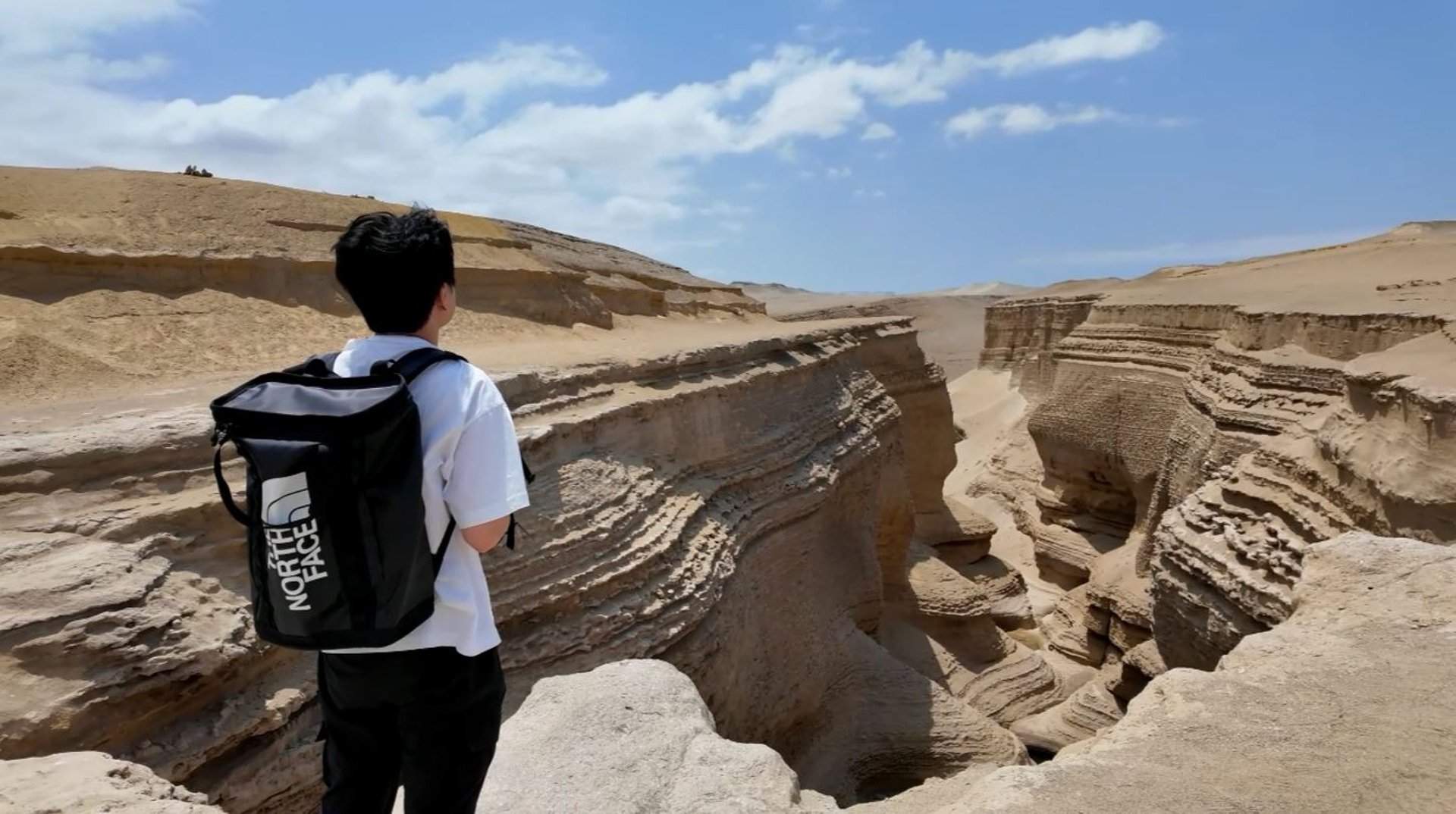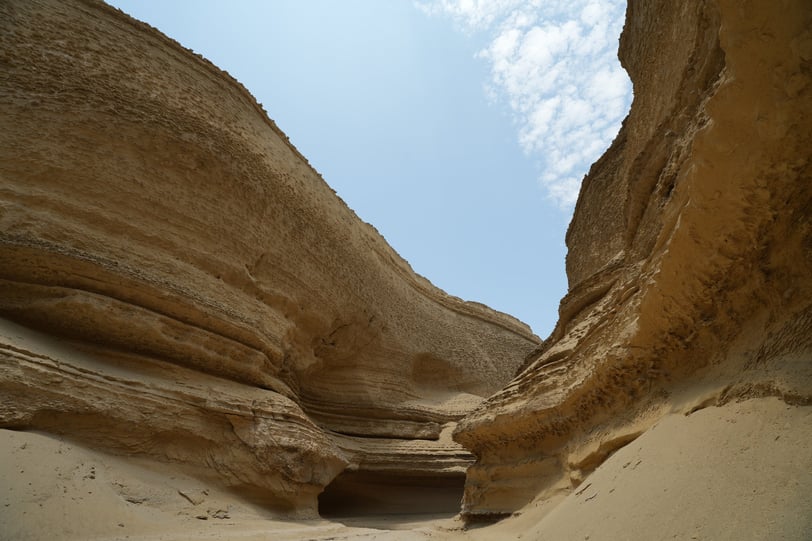
A Guide to Adventure: Trekking the Canyon of the Lost in Ica, Peru
Explore Ica Peru & the Canyon of the Lost! Find out if Ica is worth a visit, trek adventurous trails, & experience Huacachina desert. Your Ica guide awaits.
EXPLORING PERU
Yip Tan
5/12/20245 min read
Trekking the Canyon of the Lost in Ica, Peru
Here's an overview:
Introduction to Ica's Mystique
The Rich History of Ica, Peru
Accommodation Options: Where to Stay in Ica
Travel Tips and Best Time to Visit Ica, Peru
Conclusion: Is Ica, Peru, Worth A Visit?
Introduction to Ica's Mystique
Nestled on the southwestern coast of Peru lies Ica, a city that beckons with a blend of rich history, vibrant culture, and remarkable landscapes. Beyond the promise of discovery in its urban confines is the Canyon of the Lost, a natural wonder that rewards the intrepid with a trekking experience unlike any other.
Trekking the Canyon of the Lost is as much an adventure into the wilds as it is a journey back in time. This magnificent expanse, carved meticulously by the forces of water and wind over millennia, is a testament to nature's artistry. Sheer rock faces, adorned with a spectrum of minerals, create a natural tapestry that shifts with the day's changing light.
The trek is both challenging and enriching, promising a raw and authentic encounter with the wild heart of Ica. It is an escape for those seeking solace from the clamor of the city and a playground for adventurers eager to confront the rugged beauty of Peru's lesser-known canyons.
Accommodation Options: Where to Stay in Ica
Travelers exploring the stunning Canyon of the Lost in Ica have a variety of accommodation options to choose from, catering to diverse preferences and budgets.
Luxury Hotels: For those seeking comfort and indulgence, Ica boasts several upscale hotels offering plush amenities, including on-site spas, gourmet restaurants, and swimming pools. These establishments provide the perfect setting to relax after a day of trekking.
Boutique Lodges: Boutique lodges combine personalized service with a unique local charm. Often located near the canyon, they provide a tranquil retreat with beautiful views, allowing guests to immerse themselves in the natural beauty of Ica.
Mid-Range Hotels: Offering a balance of convenience and affordability, mid-range hotels may include amenities such as private rooms, Wi-Fi, and breakfast options. They are suitable for those who want comfort without excess.
Hostels: Budget-conscious travelers can opt for hostels, which are especially popular among backpackers. Many hostels in Ica offer communal areas, kitchen facilities, and the opportunity to meet fellow adventurers.
Camping: For a true outdoor experience, camping near the Canyon of the Lost is an option for those who wish to connect with nature. Campsites provide basic facilities and are often situated in picturesque locations.
Local Guesthouses: Staying in a local guesthouse or "casa hospedaje" allows visitors to experience Ican hospitality firsthand. These accommodations are typically family-run and offer a homey and authentic stay.
Each option offers a different way to experience the majestic landscapes of Ica and provides the necessary comfort after trekking through the rugged Canyon of the Lost. Visitors should consider their personal preferences, budget, and the type of experience they desire when selecting their accommodation in this vibrant region.
Travel Tips and Best Time to Visit Ica, Peru
When planning a trek to the Canyon of the Lost in Ica, there are several travel tips to keep in mind for a safe and enjoyable experience:
Research and Prepare: Before embarking on your adventure, thoroughly research the area. Ensure you have a good understanding of the terrain, and consider hiring a local guide who can provide insights and ensure your safety.
Stay Hydrated: The climate in Ica can be hot and dry. Carry plenty of water to stay hydrated throughout your trek.
Appropriate Clothing: Wear light, breathable clothing and comfortable hiking shoes. A hat and sunglasses are essential for protection against the sun’s rays.
Altitude Awareness: Be mindful of the altitude as it can affect your health. Take necessary precautions and acclimatize properly.
Travel Insurance: It is advisable to have travel insurance that covers trekking activities.
Emergency Kit: Pack a basic emergency kit including first aid supplies, a whistle, and a flashlight or headlamp.
As for the best time to visit, Ica enjoys a warm climate year-round; however, the most pleasant conditions for trekking are found between May and September:
May to September: This marks the dry season with minimal rainfall, making it the ideal time for trek lovers to explore the Canyon of the Lost. Daytime temperatures are comfortable for hiking, and the visibility is generally excellent.
October to April: During these months, occasional heavy rains can occur, potentially making trekking routes more challenging and hazardous due to mudslides and slippery paths.
The Rich History of Ica, Peru
Ica, Peru boasts a vibrant tapestry of history that lures in enthusiasts and academic scholars alike. Situated on the southern coast of Peru, Ica's past is as intriguing as its landscapes are stark and beautiful. This region has been the cradle of ancient civilizations, dating back thousands of years.
Before European arrival, Ica was home to various indigenous peoples. Most noteworthy among them were the Paracas, celebrated for their fine textiles and trepanation—a surgical intervention that involved removing a piece of the skull. The Nazca followed, leaving behind a legacy etched into the earth: the world-renowned Nazca lines, gigantic geoglyphs whose full scope is only visible from the air. This mystery continues to perplex scientists and historians, fueling legends and theories about their origins and purpose.
The Inca eventually subsumed the area into their vast empire. Their impact is evident from the remnants of their sophisticated irrigation systems that turned Ica's desert into agricultural land. By the time the Spanish conquistadors arrived, Ica had already developed into a region rich in culture and tradition.
Post-colonial history saw Ica blossom into an important agricultural center, especially for the production of grapes, cotton, and asparagus. The Spanish introduced viticulture, and Ica's pisco—a type of brandy—is now internationally celebrated.
Today, Ica's historical narrative coexists with the adventure it offers—combining the ancient past with exhilarating experiences like trekking through the Canyon of the Lost. Visitors not only embark on physical journeys but also traverse through the pages of history that shaped Ica into the alluring destination it is today.
Nestled amongst the towering sand dunes of Peru, a small but enchanting natural miracle awaits the intrepid adventurer: the Huacachina Oasis. Located just five kilometers from the city of Ica, this oasis is often touted as a hidden gem, providing a stark contrast to the arid landscapes that surround it.
The following video, shot in January of 2024, depicts the adventure trekking to The Canyon of The Lost in Ica, Peru.


Conclusion: Is Ica, Peru, Worth A Visit?
For adventure enthusiasts and those with insatiable curiosity, Ica offers an alluring blend of natural wonders, intriguing history, and intense adventure. Trekking through the Canyon of the Lost is a journey like no other—where adrenaline spikes with every twist and turn and echoes of the past reverberate off the ancient walls.
While the Canyon of the Lost offers a unique trekking experience, it is but one facet of Ica's multifaceted appeal. Whether it's the thrill of tackling the dunes or the tranquil pleasure of sampling a local Pisco, Ica caters to a diversity of tastes and interests, ensuring its status as a must-visit destination for many. It is a place where memory and landscape converge, creating unforgettable adventures, and for many, this defines the essence of what a true travel experience should be.


